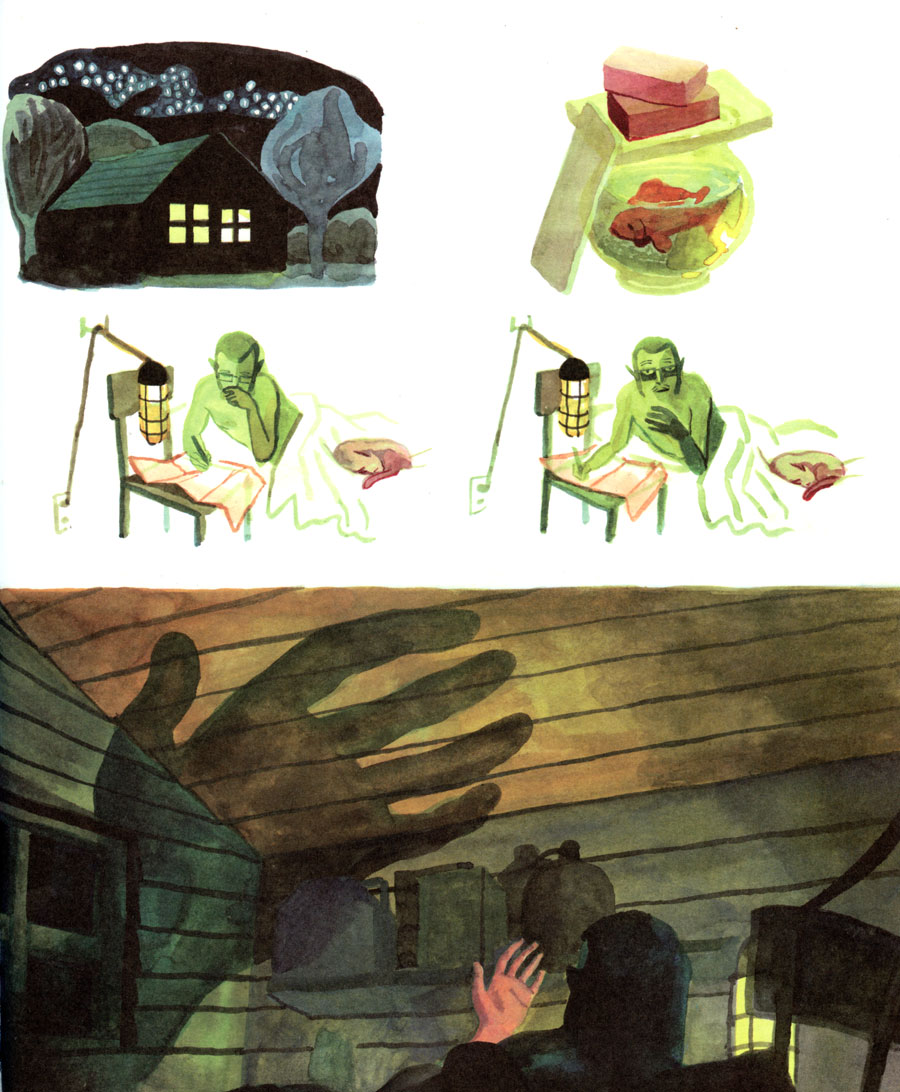The Making Of by Brecht Evens

I was pleasantly surprised by Brecht Evens’s previous book, The Wrong Place. When I first saw his beautiful color work, I was worried Evens was like many of those fine artist types who want to create comics but who have no sense for character and plot. Luckily, I was wrong. The Wrong Place demonstrated some supple and subtle characterization. This remains true with The Making Of. The cast is wider in this book, but none of the members fall into simple categories. Nor does the story itself.
It’d be easy to say this book is the tale of a fiasco, a moral fable about artistic hubris. The main character, Peterson, definitely thinks he is more important of an artist than he is. This is made clear from the beginning. Yet the amateurs in the art festival he’s invited to look up to him. Maybe it’s a case of a one-eyed man being king in the land of the blind, but the excitement Peterson inspires is real. Even if it doesn’t result in much practical effect.
And so this is an artistic document about creating art that ends up with no art being created. Yet this book hints at the idea that the final product may not be the true function of art. To complicate that though, the hope that the characters feel is expressed in trite inspirational-poster phrases. Still, the enthusiasm expressed by the characters overpowers the cynical eye with which we can look at them. Yes, this is a comedy and we laugh at these characters. But in the end, the innocent earnestness of their endeavor is the dominant emotion in the book.
Visually, Evens deepens the style he presented in The Wrong Place. Characters are represented by limited color palettes or single colors, and these colors are used in their dialogue. This makes it possible for Evens to dispense with word balloons and yet always make it clear who is speaking. He also tends to use a half or full page to establish setting, while leaving the individual panels without backgrounds. This allows the dialogue and character movements to have priority while making the establishing panels all the more striking. In some cases, they look like watercolor paintings one might find in an art museum. This could, of course, be taken as a thematic connection to the story, calling attention to art while presenting a story about art. Either way, it’s an effective approach and the sense of space in The Making Of is clearer and more specific than in The Wrong Place.
Overall, it’s clear to me that Brecht Evens is one of the current must-read comics artists. Not only does his work open up new possibilities for the medium, it manages to just be a good read. What more can one hope for?
***
I really like this review of the book by Michelle White.
(written May 15, 2016)
 This work by http://www.nijomu.com is licensed under a Creative Commons Attribution-NonCommercial 4.0 International License. |